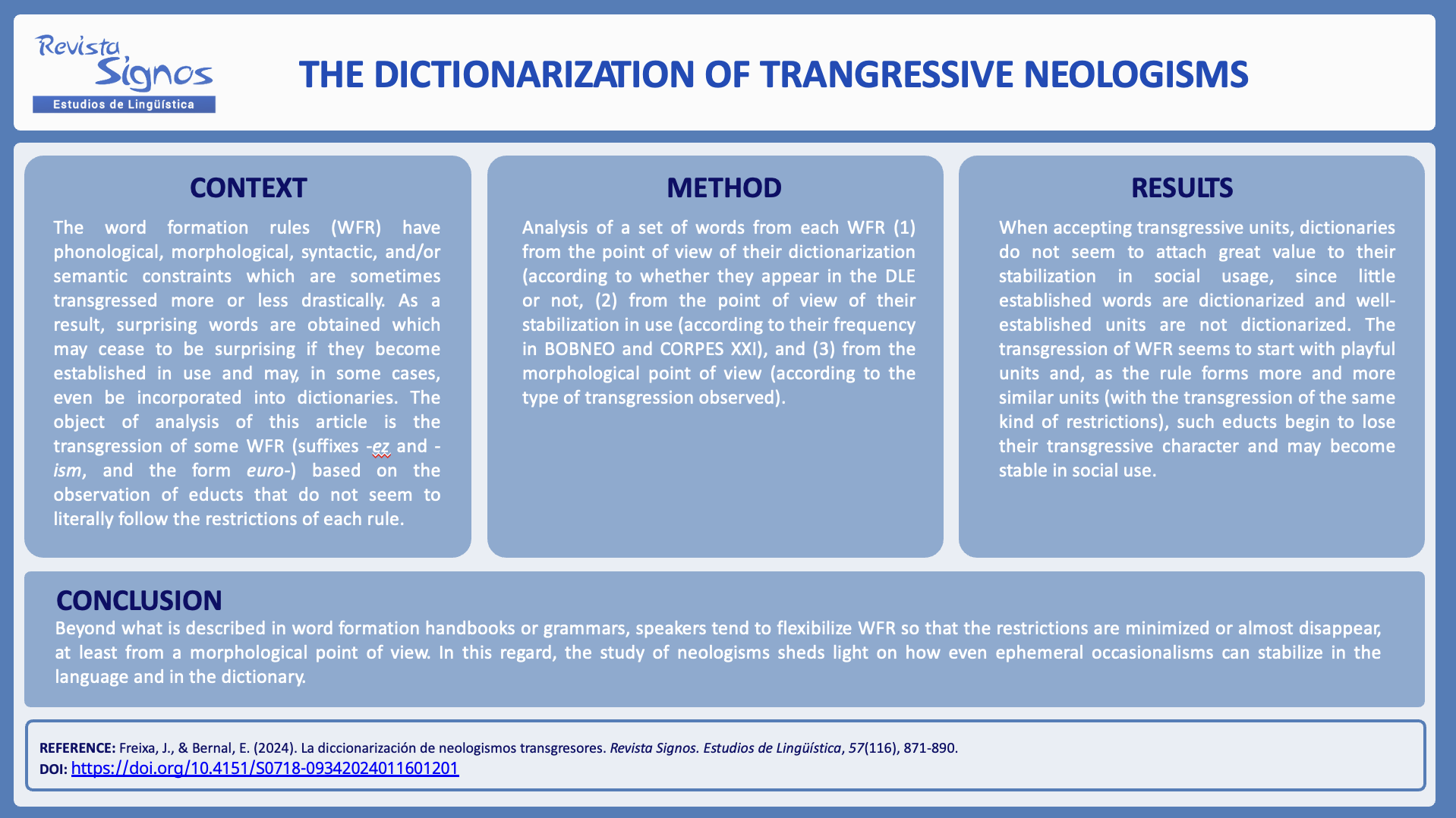The dictionarization of transgressive neologisms
DOI:
https://doi.org/10.4151/S0718-09342024011601201Keywords:
transgression, morphology, word formation, neologisms, dictionaryAbstract
Each update of the dictionary is carefully reviewed, especially for new additions. Often, some words appear in these updates that may come as a surprise because they are not particularly frequent, while many others, with a more established usage, are left out of the dictionary. In this paper we present an analysis of words that do not appear in dictionaries, built with the Spanish suffixes -ez and -ismo, and with the form euro-, which, in addition, present some transgression factors in their construction. Thus, we review in what sense the word-formation rule is broken, we evaluate the pragmatic effect they achieve, and we compare the analogous cases that have reached the dictionary and those that are left out, also considering the frequency of appearance in the corpus. The results of this analysis show how the continuous transgressions of a rule end up modifying it, so that the original restrictions are altered, in general, with a tendency to reduce them. This change reverts in the dictionary, which incorporates the words resulting from the extended rule, stabilizing what a priori would be considered transgressive forms.

Published
How to Cite
Issue
Section
License
Copyright (c) 2024 Revista Signos. Estudios de Lingüística

This work is licensed under a Creative Commons Attribution 4.0 International License.
Copyright agreement:
Authors who have a manuscript accepted for publication in this journal agree to the following terms:
Authors will retain their copyright and grant the journal the right of first publication of their work by means of this copyright agreement document, which is subject to the Creative Commons Acknowledgment License that allows third parties to share the work provided that its author and first publication in this journal are indicated.
Authors may adopt other non-exclusive license agreements for distribution of the published version of the work (e.g., depositing it in an institutional repository or publishing it in a monographic volume) as long as the initial publication in this journal is indicated.
Authors are allowed and encouraged to disseminate their work via the internet (e.g., in institutional publications or on their website) before and during the submission process, which can lead to interesting exchanges and increase citations of the published work (read more here).


